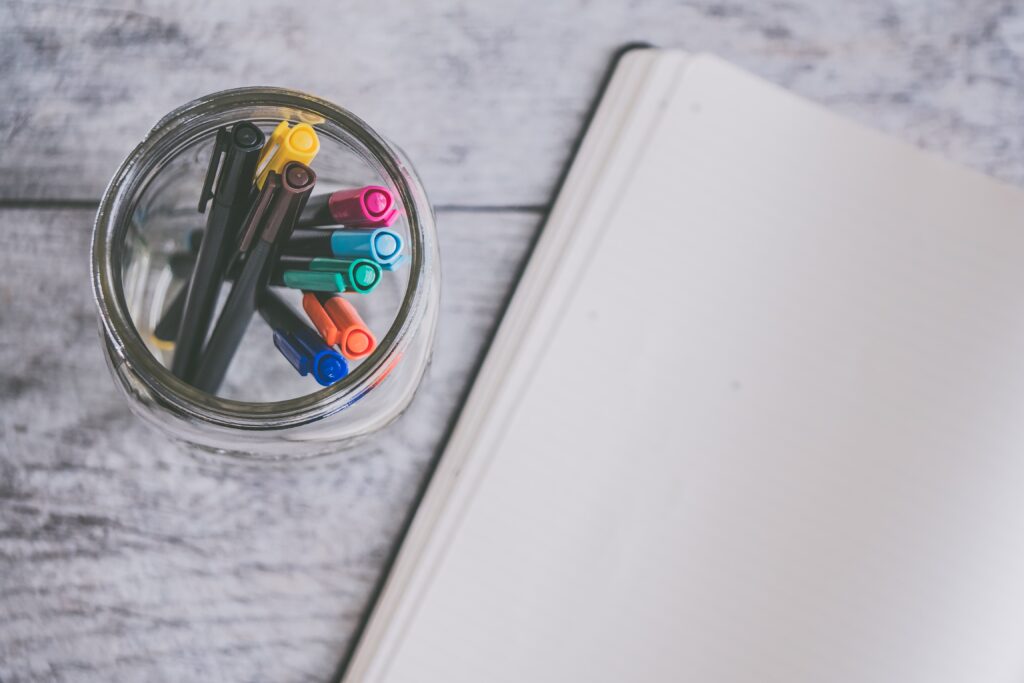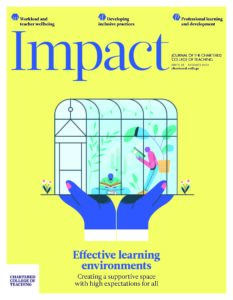The learning environment: Building routines, habits and familiarity

James Blake, Assistant Principal, The Skinners’ Kent Academy, Tunbridge Wells, UK
Rules, routines and regulating them are part of the day-to-day running of any school. Drawing on my experience with a Year 9 class, this reflection considers the role of routines in creating a productive classroom environment that supports learning. From lining up in silence to putting your hand up, coats off at the door and phones turned off, we embed rules and routines from the offset. Most students seemingly accept these instructions, having had them drummed into their minds from at least primary school. As the Shotten Hall Research School (2021) reported:
Retrieval practice is what will make our new routines stick. It’s hard to predict how many times we will have to reteach a routine before it becomes embedded, but we must remember that students learn routines regularly for every subject and every teacher, and the more we repeat the routines, the less they will impact on our students’ cognitive load.
Routines work when they are consistent and become habitual. They help students feel familiar with their learning environment, and in turn they learn better (Willingham, 2009). While I had embedded routines for good behaviour in my classroom, I wanted to know the extent to which they made an impact on learning. I asked my design and technology Year 9 class – a mixed- to high-attaining group of students who are polite, focused and always ready to learn – what they thought would happen during the school day if we dropped our routines. I expected to hear a wave of responses that remarked on how they know the routines were there to keep them focused and to help them succeed. But I did not. I was surprised to hear them respond that they didn’t think our rules were necessary. They told me that seating plans were annoying because they worked better when they were sitting with their friends, with one telling me it improved their confidence when they could sit where they wanted. Another gripe seemed to be lining up at the door to enter the room. They surmised that if they could sit where they wanted to, they would arrive to lessons early to have their choice of seat. So, I put this to test and told them that at the next lesson, the door would be open, they could sit where they wanted and the lesson would start when everyone was settled and ready.
I opened my classroom door five minutes early, allowing students to make their way quickly from break. There was one single student there. However, she did not enter the room but simply waited at the door until another arrived and reminded her they could go in and sit where they wanted. The pair were clearly not friends as they entered the room and sat as far away from one another as humanly possible. Gradually, more students trickled in, but the majority came in dead on 11:25, our usual start time. They excitedly navigated the room, deciding where they should sit, and where their other friends should sit, and if anyone needed to move to accommodate their envisaged seating plan. Five minutes into the lesson, everyone had arrived but there was still some discussion about where to sit. I told them that they needed to work this out for themselves – there were no rules and this is what they had wanted. Uncomfortably, the remaining students sat down. Giving out the books was time consuming as no one knew where anyone was sitting, but we got there, and the lesson was in full flow by around 11:35.
In the previous lesson, the students had created a design idea for child night lights to assist them if they awaken in the night. In this lesson, they needed to create a plan for making them. I asked them to take a photo with their iPads of their page at the start of the lesson for comparison at the end. When they had created their designs, the lesson had been very clear and structured, underpinned by routines. Usually, students line up at the door then enter in silence to their designated seat where their folder has been neatly placed. They stand in silence until told to sit down and they begin their silent start task. The only sound they make during this timer is to answer to their names during the register. In this lesson they did not – and it showed. By the end of the lesson when we reflected on the experience, students expressed that they were astonished by how little work they had produced. One student remarked that they felt like they had done so much but were shocked when they compared their iPad pictures at the start and end of the lesson to discover that, in fact, they had not.
What students hadn’t accounted for is the time that is saved when routines become habits, and how those habits allow for greater time to learn and progress. The students involved saw the benefits of structure and routine, and how they allow time for concentrating on their work. They do not need to think about where to sit, or who to sit with and they were very open about the added stress of having to do this. It seemed to be an eye-opener to them all and something they genuinely did not expect.
Routines help to provide a sense of normality and bring consistency and comfort to children and young people who might otherwise be uncomfortable with change (Collier, 2020). As I hope my Year 9s now realise, routines help to alleviate stress, freeing up thinking space for improved learning. We could perhaps use this knowledge of the value of routines to improve aspects of the educational journey, such as the transition from primary to secondary – a time that is full of excitement for some but dread for others. There are a number of things that teachers and school leaders could implement to create a learning environment that nurtures familiarity and progress. If you go into any Costa Coffee shop in the country you can easily locate the sugar, stirrers, lids etc. because they are always more or less in the same place. Maybe by putting resources – scissors, glues, pencils, paper – in the same place in every classroom could help students achieve greater productivity. Utilising classroom display boards to include examples of current work and having grading criteria and objectives clearly referenced and in the same place in every classroom might help.
I firmly believe that when students feel comfortable, safe and happy in their learning environment, they will succeed. When they can make links through habit, they will have a greater capacity to absorb more information and more time to devote to their learning.
- Shotton Hall Research School (2021) The role of routines in behaviour for learning. Available at: https://researchschool.org.uk/shottonhall/news/the-role-of-routines-in-behaviour-for-learning (accessed 9 May 2022).
- Collie E (2020)The importance of routine for children. Available at: https://www.highspeedtraining.co.uk/hub/the-importance-of-routine-for-children/ (accessed 9 May 2022).
- Willingham DT (2009). Why Don’t Students Like School? San Francisco, CA: Jossy Bass.











I agree.
The battle remains to convince all !
‘it hinders creativity’ ‘it does not matter’ but it clearly does. it helps us and it helps them. We will use it as a starting point for our own staff
Maybe this will go some way to help persuade some that routines can actively help with behaviours for learning
I teach KS1 and the effectiveness of routines is clearly visible. More learning time & less confusion and stress for the little ones.